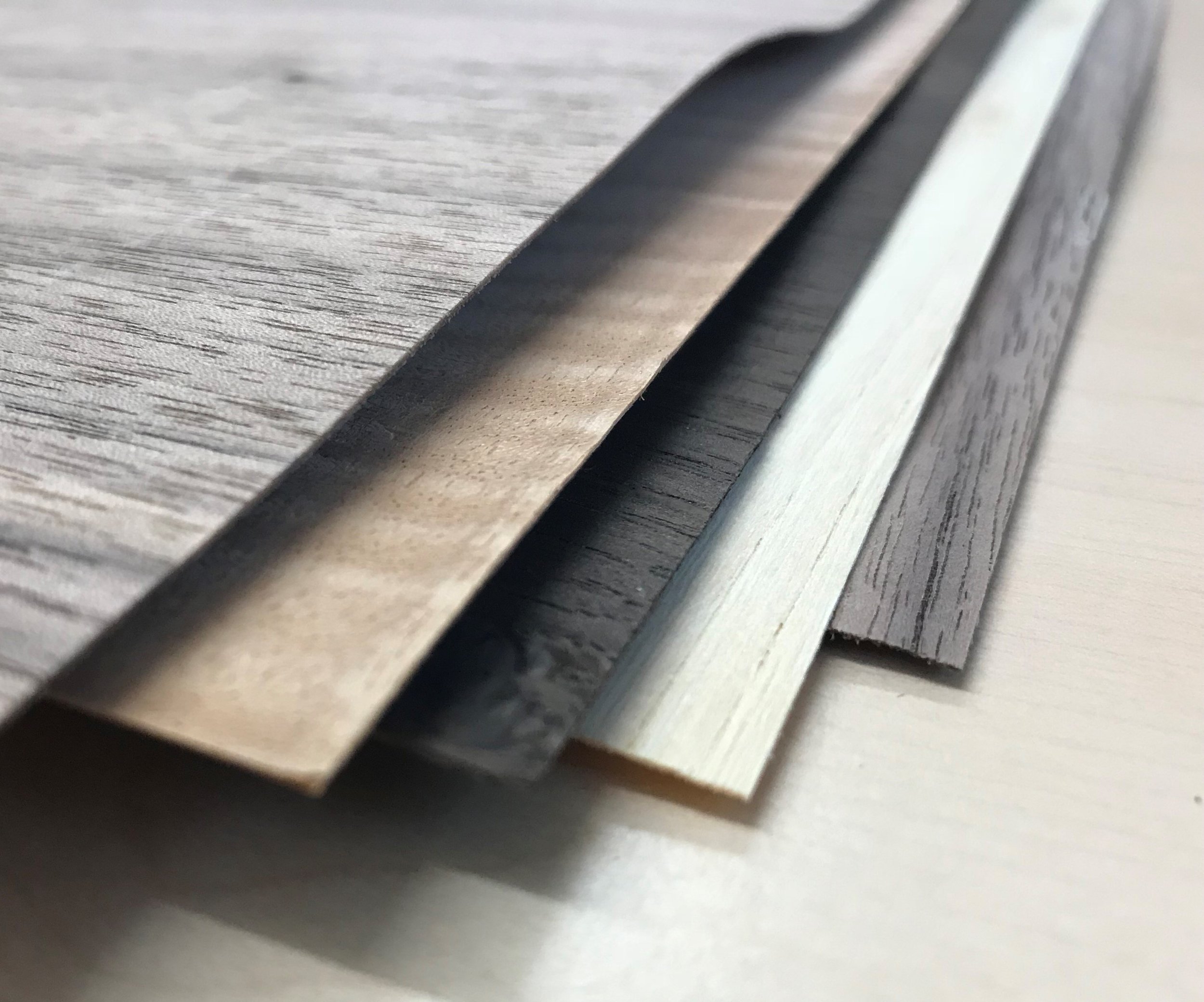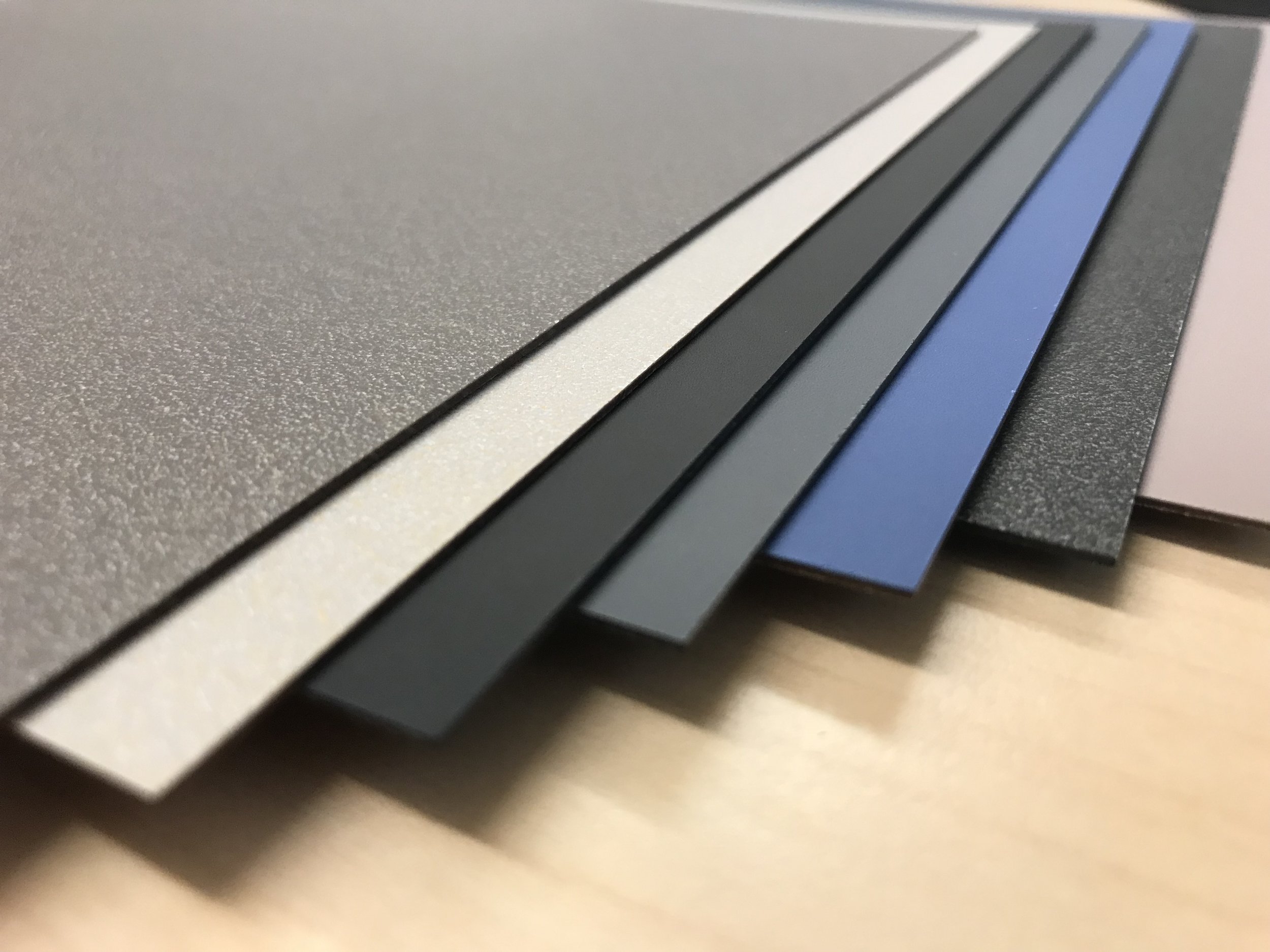At its most basic definition a wood veneer is a thinly sliced timber glued to a core panel to enhance its appearance.
The earliest known example of veneered panels goes back 4,000 years, to the Ancient Egyptians. Then, as we still do now, the Egyptians used veneers of rare and expensive woods to improve the appearance and increase the value of the solid timber used to create plain furniture.
Modern production methods have improved efficiency and consistency but has not changed the basic principles nor the benefits in creating and applying veneered panels to bespoke furniture. Modern manufacturing, design and technology has produced alternative veneer products that can provide a greater variety of finish through differing manufacturing methods.
For over 50 years, Griffiths & Hood has been at the forefront of veneered panels and furnishings. Take a look at an overview of our production materials below.
Natural veneers are a thin layer of real hardwood taken from timber that is a product of its individual environment. Location, climate and soil are a few of the factors that impact each tree individually, meaning each natural veneer is a unique piece. The colour of veneer is typical to the tree that produces it, however it can be stained or dyed to achieve non-natural colours.
When used and sourced correctly, veneering makes more use of the original timber than in the creation of one solid piece. Veneering timber is an economically and ecologically sustainable approach to furniture production.
Natural veneer will produce a spectacular and unique creation every time, no two pieces can be identical; even veneers produced from the same batch of trees will be slightly different.
Veneered panel production is a traditional skill that we at Griffiths and Hood are proud to continue to develop. Our skilled craftsmen have honed their ability to manipulate, stitch, press, cut, measure, stain and lacquer through years of practice and development. Griffiths and Hood encourages innovation and our manufacturing team are continuing to develop new uses and methods for natural veneer.
Engineered Veneer
Engineered Veneer is a man-made, manufactured version of natural veneer. This veneer was initially created to reduce the carbon impact of classic methods of creating veneered panels. It also allows for commercial production with identical results every time.
Some engineered veneer products use renewable and sustainable species of tree (typically Poplar). Others use new 3D printing technology. The method is the same in both products: stacks of thin material are dyed, dried and glued together before being re-cut and re-glued to produce the desired pattern.
The final product creates an emulated version of natural wood grains. Engineered veneer allows for the creation and production of new designs not to be found in natural veneer. Engineered veneers offer a veneer effect that can be mass produced to ensure a range has identical designs with very little variation or individuality in finish.
Laminate
Laminate (or HPL – High Pressure Laminate) is a man-made product that is formed from soaking, drying and stacking of paper sheets, often to give the appearance of a wood grain. They are generally produced with three layers. A base of brown paper is coated in a phenolic resin, a second layer is decorated for design and a third protective clear layer is added.
Laminate products can be designed with specific properties such as high wear or flame-resistance. Any laminate furniture product is likely to be heat-resistant, scratch-resistant, easy to care for and durable.
As it is a manufactured product and not naturally occurring, Laminate does not offer the same unique finish as natural veneer, but can be produced in an endless number of designs and coloured ranges.
Laminate brands we use at Griffiths & Hood include: Kronospan, Egger, Formica, Polyrey & Fenix
Melamine (MFC)
Melamine is the name of a resin used to soak layers of paper which, once applied to a particle board and heated, create a solid sheet with a durable and hard surface. Melamine is a form of laminate but the two are produced slightly differently, during the heating and pressing process Melamine is applied at a lower pressure.
A melamine sheet is typically cheaper to acquire than veneer or laminate but is tricky to work with in the creation of bespoke office furniture. It cannot be easily cut by traditional saws, potentially requiring dedicated and expensive equipment, nor is it malleable to bend to curved or moulded edges.
Melamine is typically referred to as MFC, which stands for Melamine Faced Chipboard. However, it can also be applied to an MDF core (MFMDF). Regardless of the choice of core, melamine faced products are hard-wearing, water-proof, resistant to scratches and stains, as well as being very easy to clean and maintain.
Painted MDF
Painted MDF (Medium-Density Fibreboard) provides the most flexibility in design and production. Once primed and sanded, MDF panels can be coated with a massive variety of paints and finishes as unlike veneer, there is no grain or any variations in texture or density.
The priming process is integral to producing painted MDF, as it seals the porous surfaces to provide a suitable base for the paint to adhere to and to resist moisture.
Before painting, our MDF is coated with two coats of specialist white primer and any exposed edges are coated with a cellulose based MDF clear sealant. Once fully sealed, any paint applied will now dry in a uniform manner.
Painted MDF is extremely versatile to work with, and provides limitless options as it has no defining features which dictate the way a piece should be joined. This makes the painted panels symmetrical and consistent in any direction.







